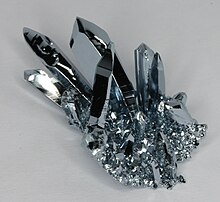Sunday, October 26, 2014
Air Quality
As I clicked on the interactive world map of air quality, the first area that popped up was the United States. I began to scan across the nation in search of the worst air quality to find the cause and location of it. The only red hazardous tag that I saw was located in the Southwest corner of the nation in Riverside, California. After doing some research, I found that the local municipal Airport was causing the Hazard. Everything was normal on the charts except the PM2.5. That is what set off the hazard tag being measured at 830. All of the other sections of pollution and air measurement were normal including the ozone and nitrous oxide.
Saturday, October 25, 2014
Global Climate Change
Medieval Global Temperature Optimum:
The Medieval Global Temperature Optimum was a time period that lasted from 950 AD to 1250 AD. The area that it covered was that mainly of the North Atlantic region, but it could have been related to other climate changes in California and China. Although these were the warmest temperatures prior to the 20th century, they were cooler averages than the recent global temperatures of the 20th century. This era gave birth to the Little Ice Age which followed the next hundreds of years.
Little Ice Age:
The Little Ice Age occurred during the time period of 1300-1870 which North America and Europe were subject to much cooler temperatures than that of the 20th Century. The average temperature was one degree Celsius cooler which caused a domino effect of bodies of water in Europe freezing over and shortening the growing season by several weeks. Iceland was one of the hardest hit areas. Crops were almost impossible to grow including wheat and even hay crops. Sea Ice also became a big challenge, which extended a lot farther south than it had in the previous years. The deadly combination caused Iceland to loose half of its population.
Friday, October 10, 2014
Osmium
Osmium
History:
Osmium is a chemical element with symbol Os and atomic number 76. It is a hard and brittle transition metal in the platinum group. Osmium is the densest naturally occurring element, with a density of 22.59 g/cm3. This metal was first discovered in 1803 by Smithson Tennant and William Hyde Wollaston in London, England. Osmium was discovered along side other metals like platinum and those that are in the platinum group.
Occurrence:
Osmium is the least abundant stable element in Earth's crust with an average mass fraction of 50 parts per trillion in the continental crust. It is found in three main areas on earth. These areas include: igneous deposits (crustal intrusions from below), impact craters, and deposits reworked from one of the former structures. The largest known primary reserves are in the Bushveld igneous complex in South Africa. There are smaller reserves in the United states.
Mining and Production:
Osmium is obtained commercially as a by-product from nickel and copper mining and processing. During electro refining of copper and nickel, metals in the platinum group sink down to the bottom portion of the cell in something called anode mud. From there, osmium is still surrounded by other metals of similar properties. There is a series of different solutions that are used to dissolve osmium away from the other metals and once dissolved, the product is reduced using hydrogen, yielding the metal as a powder or sponge that can be treated using powder metallurgy techniques.
Application:
Because of the extreme toxicity of its oxide, osmium is rarely used in its pure state, and is instead often alloyed with other metals. Uses include: finger printing identification, detecting fatty cells in electron microscopes, osmium coated mirrors were flown in several space missions due to the high UV light reflection.
Price:
Osmium is usually sold as a minimum 99.9% pure powder. It is measured by troy weight and by grams. Its price in 2012 was about $400 per troy ounce (or about $13,000 per kilogram).
Mining and Production:
Osmium is obtained commercially as a by-product from nickel and copper mining and processing. During electro refining of copper and nickel, metals in the platinum group sink down to the bottom portion of the cell in something called anode mud. From there, osmium is still surrounded by other metals of similar properties. There is a series of different solutions that are used to dissolve osmium away from the other metals and once dissolved, the product is reduced using hydrogen, yielding the metal as a powder or sponge that can be treated using powder metallurgy techniques.
Application:
Because of the extreme toxicity of its oxide, osmium is rarely used in its pure state, and is instead often alloyed with other metals. Uses include: finger printing identification, detecting fatty cells in electron microscopes, osmium coated mirrors were flown in several space missions due to the high UV light reflection.
Price:
Osmium is usually sold as a minimum 99.9% pure powder. It is measured by troy weight and by grams. Its price in 2012 was about $400 per troy ounce (or about $13,000 per kilogram).
Subscribe to:
Comments (Atom)
